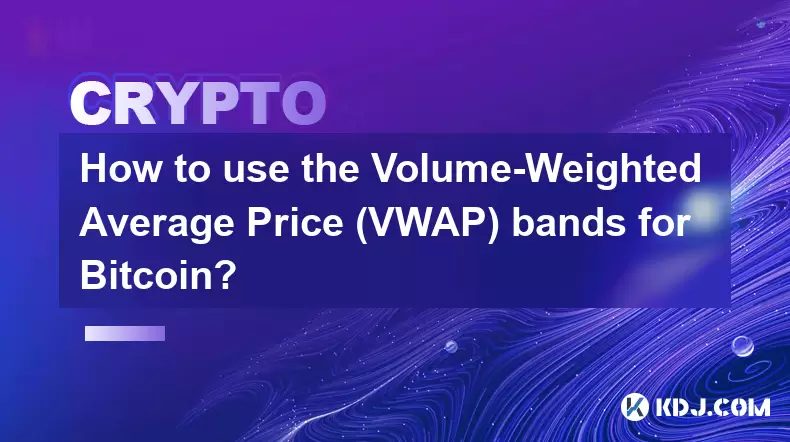-
 Bitcoin
Bitcoin $108,017.2353
-0.81% -
 Ethereum
Ethereum $2,512.4118
-1.58% -
 Tether USDt
Tether USDt $1.0002
-0.03% -
 XRP
XRP $2.2174
-1.03% -
 BNB
BNB $654.8304
-0.79% -
 Solana
Solana $147.9384
-1.76% -
 USDC
USDC $1.0000
-0.01% -
 TRON
TRON $0.2841
-0.76% -
 Dogecoin
Dogecoin $0.1636
-2.09% -
 Cardano
Cardano $0.5726
-1.72% -
 Hyperliquid
Hyperliquid $39.1934
1.09% -
 Sui
Sui $2.9091
-0.59% -
 Bitcoin Cash
Bitcoin Cash $482.1305
0.00% -
 Chainlink
Chainlink $13.1729
-1.54% -
 UNUS SED LEO
UNUS SED LEO $9.0243
-0.18% -
 Avalanche
Avalanche $17.8018
-1.90% -
 Stellar
Stellar $0.2363
-1.69% -
 Toncoin
Toncoin $2.7388
-3.03% -
 Shiba Inu
Shiba Inu $0.0...01141
-1.71% -
 Litecoin
Litecoin $86.3646
-1.98% -
 Hedera
Hedera $0.1546
-0.80% -
 Monero
Monero $311.8554
-1.96% -
 Dai
Dai $1.0000
-0.01% -
 Polkadot
Polkadot $3.3473
-2.69% -
 Ethena USDe
Ethena USDe $1.0001
-0.01% -
 Bitget Token
Bitget Token $4.3982
-1.56% -
 Uniswap
Uniswap $6.9541
-5.35% -
 Aave
Aave $271.7716
0.96% -
 Pepe
Pepe $0.0...09662
-1.44% -
 Pi
Pi $0.4609
-4.93%
How to use indicators to differentiate a Bitcoin pullback from a reversal?
Bitcoin traders must distinguish pullbacks from reversals using tools like moving averages, RSI, volume analysis, and Fibonacci levels to make informed decisions in volatile markets.
Jul 05, 2025 at 07:17 pm

Understanding Bitcoin Pullbacks and Reversals
In the volatile world of Bitcoin trading, distinguishing between a pullback and a reversal is crucial for making informed decisions. A pullback refers to a temporary decline in price within an ongoing uptrend, while a reversal indicates a fundamental shift in market sentiment, potentially leading to a downtrend. Misinterpreting these two can result in missed opportunities or unnecessary losses.
Pullbacks are often driven by short-term profit-taking or minor shifts in investor sentiment, whereas reversals are usually fueled by significant changes in macroeconomic conditions, regulatory news, or broader market dynamics.
Using Moving Averages to Identify Trends
One of the most effective tools for differentiating between a pullback and a reversal is the use of moving averages. The 50-day and 200-day moving averages (MA) are widely followed by traders and investors alike.
- Crossovers: When the 50-day MA crosses below the 200-day MA, it's known as a "death cross," which may signal a potential reversal. Conversely, a "golden cross" occurs when the 50-day MA crosses above the 200-day MA, suggesting a continuation of the uptrend.
- Price interaction: During a pullback, the price often finds support near the 50-day MA and resumes its upward trajectory. If the price breaks below the 200-day MA and remains there, it could indicate a reversal rather than a temporary correction.
Leveraging the Relative Strength Index (RSI)
The Relative Strength Index (RSI) is a momentum oscillator that measures the speed and change of price movements. It helps traders determine whether an asset is overbought or oversold.
- Oversold conditions: An RSI value below 30 typically signals that Bitcoin is oversold, suggesting a potential bounce or continuation of the trend after a pullback.
- Overbought conditions: An RSI above 70 indicates overbought territory, which may precede a pullback or even a reversal if not supported by strong fundamentals or positive news.
- Divergence: Watch for RSI divergence — when the price makes higher highs but the RSI makes lower highs, this could signal weakening momentum and a possible reversal.
Analyzing Volume Patterns
Volume plays a critical role in confirming whether a downward move is a pullback or a reversal. Volume analysis should be combined with other indicators to enhance accuracy.
- High volume during decline: A sharp drop in Bitcoin’s price accompanied by unusually high volume may suggest panic selling and a potential reversal.
- Low volume pullbacks: If the price drops but volume remains low, it’s more likely a pullback as institutional players aren’t actively exiting their positions.
- Volume on resumption: After a dip, if the price starts rising again with increasing volume, it supports the idea that the trend is intact and the previous move was just a pullback.
Utilizing Fibonacci Retracement Levels
Fibonacci retracement levels help identify potential support and resistance areas during a pullback. These levels are based on mathematical ratios derived from the Fibonacci sequence.
- Common retracement levels: Traders watch the 38.2%, 50%, and 61.8% levels during a pullback. If Bitcoin finds support around one of these levels and resumes its upward movement, it’s likely a pullback.
- Break below 61.8%: If the price falls below the 61.8% retracement level and continues to decline, it may signal a reversal of the prior trend.
- Combination with candlestick patterns: Using Fibonacci levels alongside candlestick formations like bullish engulfing or hammer candles can provide stronger confirmation of a pullback.
Frequently Asked Questions
What timeframes are best suited for analyzing pullbacks and reversals?
Shorter timeframes like the 1-hour or 4-hour charts are useful for identifying early signs of pullbacks or reversals. However, longer timeframes such as daily and weekly charts offer more reliable signals and should be used to confirm trends before making decisions.
Can multiple indicators give conflicting signals?
Yes, especially during periods of high volatility. It's important to look at the confluence of indicators rather than relying on a single tool. For instance, if RSI suggests oversold conditions but volume shows strong selling pressure, the likelihood of a reversal increases.
Is it possible for a pullback to evolve into a reversal?
Absolutely. What initially appears as a pullback can develop into a full-blown reversal if key support levels break and negative sentiment persists. Continuous monitoring of price action and volume is essential in such cases.
How do macroeconomic factors influence the distinction between pullbacks and reversals?
Macroeconomic events such as interest rate decisions, inflation reports, or regulatory changes can trigger sudden and sustained price moves. These external factors must be considered alongside technical indicators to avoid misinterpreting market structure.
Disclaimer:info@kdj.com
The information provided is not trading advice. kdj.com does not assume any responsibility for any investments made based on the information provided in this article. Cryptocurrencies are highly volatile and it is highly recommended that you invest with caution after thorough research!
If you believe that the content used on this website infringes your copyright, please contact us immediately (info@kdj.com) and we will delete it promptly.
- Cryptos in July 2025: Massive Gains or Just Hype?
- 2025-07-05 20:30:13
- Pepe's EVM Layer 2 Meme Coin Mania: What's the Hype?
- 2025-07-05 20:50:12
- Shiba Inu, Dogecoin, and the Crypto Skyrocket: What's Making These Memes Soar?
- 2025-07-05 21:10:12
- Tokenized Stocks: Robinhood, Gemini, and the NYSE Threat
- 2025-07-05 21:10:12
- Altcoin Adventures: Navigating the Pepe Fork Frenzy and Solana's Summer Swings
- 2025-07-05 21:15:12
- Hong Kong's Tokenised Bond Leap: Zero Stamp Duty Sparks Web3 Ambitions
- 2025-07-05 20:30:13
Related knowledge

What is the Woodies CCI indicator and can it be used for Bitcoin?
Jul 04,2025 at 05:14pm
Understanding the Woodies CCI IndicatorThe Woodies CCI indicator is a variation of the traditional Commodity Channel Index (CCI), which was originally developed by Donald Lambert. The standard CCI measures the current price level relative to an average price over a given period, typically 14. However, the Woodies version modifies this calculation to mak...

How to use indicators to trade the opening range breakout for Bitcoin CME futures?
Jul 05,2025 at 07:35pm
What Is the Opening Range Breakout Strategy?The opening range breakout (ORB) strategy is a popular trading technique used in both traditional markets and cryptocurrency futures, particularly for Bitcoin on the CME. This method involves identifying a specific price range formed during the early phase of a trading session and then taking positions when th...

What does a bearish cross on the Stochastic RSI mean for Bitcoin?
Jul 05,2025 at 07:18pm
Understanding the Stochastic RSI IndicatorThe Stochastic RSI (Relative Strength Index) is a momentum oscillator used in technical analysis to identify overbought or oversold conditions in an asset's price. It combines two well-known indicators — the RSI and the Stochastic Oscillator — to provide more nuanced signals than either could alone. The Stochast...

How to set alerts for moving average crosses on a Bitcoin chart?
Jul 05,2025 at 09:21pm
Understanding Moving Average Crosses in Bitcoin TradingMoving average crosses are one of the most commonly used technical indicators among cryptocurrency traders. In the context of Bitcoin, these signals help identify potential trend reversals or confirm ongoing trends. A moving average cross occurs when a short-term moving average (e.g., 9-day EMA) int...

What is a squeeze momentum indicator and how does it work for Bitcoin?
Jul 05,2025 at 07:32pm
Understanding the Squeeze Momentum IndicatorThe Squeeze Momentum Indicator is a technical analysis tool used by traders to identify potential breakout opportunities in financial markets, including cryptocurrencies like Bitcoin. It was developed by John Carter and is widely used among active traders who seek to capture volatility expansions after periods...

How to use the Volume-Weighted Average Price (VWAP) bands for Bitcoin?
Jul 04,2025 at 04:28pm
Understanding the Basics of VWAP BandsThe Volume-Weighted Average Price (VWAP) is a key metric used in trading to determine the average price at which an asset, such as Bitcoin, has traded throughout the day. It takes into account both volume and price, making it more reliable than a simple moving average. VWAP bands are essentially standard deviation c...

What is the Woodies CCI indicator and can it be used for Bitcoin?
Jul 04,2025 at 05:14pm
Understanding the Woodies CCI IndicatorThe Woodies CCI indicator is a variation of the traditional Commodity Channel Index (CCI), which was originally developed by Donald Lambert. The standard CCI measures the current price level relative to an average price over a given period, typically 14. However, the Woodies version modifies this calculation to mak...

How to use indicators to trade the opening range breakout for Bitcoin CME futures?
Jul 05,2025 at 07:35pm
What Is the Opening Range Breakout Strategy?The opening range breakout (ORB) strategy is a popular trading technique used in both traditional markets and cryptocurrency futures, particularly for Bitcoin on the CME. This method involves identifying a specific price range formed during the early phase of a trading session and then taking positions when th...

What does a bearish cross on the Stochastic RSI mean for Bitcoin?
Jul 05,2025 at 07:18pm
Understanding the Stochastic RSI IndicatorThe Stochastic RSI (Relative Strength Index) is a momentum oscillator used in technical analysis to identify overbought or oversold conditions in an asset's price. It combines two well-known indicators — the RSI and the Stochastic Oscillator — to provide more nuanced signals than either could alone. The Stochast...

How to set alerts for moving average crosses on a Bitcoin chart?
Jul 05,2025 at 09:21pm
Understanding Moving Average Crosses in Bitcoin TradingMoving average crosses are one of the most commonly used technical indicators among cryptocurrency traders. In the context of Bitcoin, these signals help identify potential trend reversals or confirm ongoing trends. A moving average cross occurs when a short-term moving average (e.g., 9-day EMA) int...

What is a squeeze momentum indicator and how does it work for Bitcoin?
Jul 05,2025 at 07:32pm
Understanding the Squeeze Momentum IndicatorThe Squeeze Momentum Indicator is a technical analysis tool used by traders to identify potential breakout opportunities in financial markets, including cryptocurrencies like Bitcoin. It was developed by John Carter and is widely used among active traders who seek to capture volatility expansions after periods...

How to use the Volume-Weighted Average Price (VWAP) bands for Bitcoin?
Jul 04,2025 at 04:28pm
Understanding the Basics of VWAP BandsThe Volume-Weighted Average Price (VWAP) is a key metric used in trading to determine the average price at which an asset, such as Bitcoin, has traded throughout the day. It takes into account both volume and price, making it more reliable than a simple moving average. VWAP bands are essentially standard deviation c...
See all articles

























































































